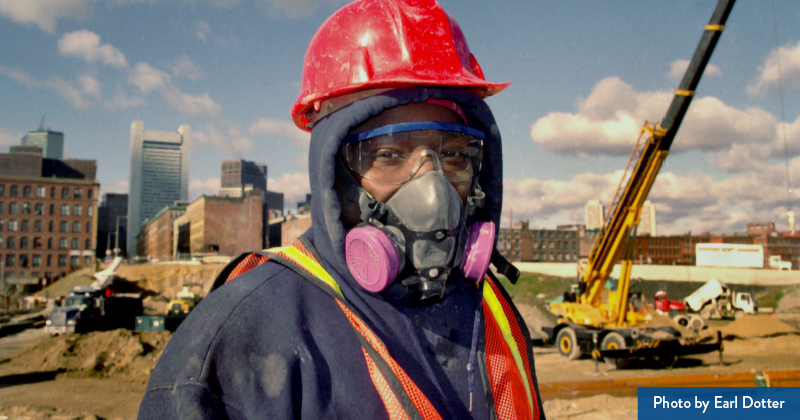- Who We Are
- Clinician Employment
- Publications
- Witness to Witness (W2W)
- Kugel & Zuroweste Health Justice Award
- Your Voice Matters: Photovoice Project
Wed, 04/28/2021 | by MCN Admin


[Editor's Note: Today is Workers Memorial Day, established to recognize workers who died or suffered from exposures to hazards at work.]
Fifty years ago today, the Occupational Safety and Health Act went into effect. The act aimed to protect workers from injury and illness related to their work. It created the Occupational Safety and Health Administration (OSHA) to enforce the safety of workplaces and the National Institute for Occupational Safety and Health (NIOSH) to conduct research on the prevention of workplace-related injury or illness. Just as critical as the regulatory framework it developed, the act advanced a culture of worker protection and safety, ensuring protections which workers in the US now largely take for granted.
Yet worker protection was unevenly implemented. Farmworkers in particular face significant workplace hazards including heavy machinery, exposure to pesticides and excessive heat, and, often, unsafe and unsanitary housing facilities. Consequently, farm work remains one of the most dangerous industries, with higher rates of fatality on the job than almost any other profession. This has greatly affected Latinx workers, who make up about 83 percent of farmworkers. Latinx workers, in particular, have a higher fatality rate on the job than the overall fatality rate -- and most of those workers, 67 percent in 2018, were immigrants.
In addition to these dangers, farmworkers face a lack of sufficient regulatory protection. Farmworkers do not have the same protections that workers in other industries consider basic worker rights, like minimum wage and overtime pay. This “agricultural exceptionalism” is a window into the exploitation that immigrant workers routinely experience on the job. Immigrant workers, some of whom are lacking authorization to work, may be fearful of reporting hazards on the job, poor management behavior, and wage theft, out of concern of exposing their immigration status. Low literacy, lack of English language skills, cultural norms, a lack of access to health care and health education, and other barriers may further endanger immigrant workers on the job.
Then came COVID-19.
"COVID-19 has only echoed and intensified what was already there,” noted Amy K. Liebman, Director of Environmental and Occupational Health at Migrant Clinicians Network. A report from the Center for Migration Studies determined that 69 percent of all immigrants in the labor force and 74 percent of workers who lack authorization to work in the US were deemed “essential”, meaning many immigrants continued to go to work through the worst of the infection rate spikes in their communities.
Many workplaces lacked basic COVID-19 worker protections; many still do. OSHA initially declined to implement an emergency standard, and many employers have not put into effect basic protections recommended by the CDC and other public health experts to mitigate COVID exposure, including provision of masks and other protective equipment, access to sanitation supplies, or modifications to increase distance between workers. Many workers additionally increase their risk of exposure in farm-provided housing and transportation, where physical distancing is extremely difficult.
As a result, early in the pandemic, numerous deadly outbreaks across the US, at meatpacking plants and farms, dominated headlines. Hundreds of thousands of workers were infected and thousands of workers died. Yet, little has changed to protect workers from health risks on the job. On Monday, OSHA submitted a draft emergency standard for review -- but it's unclear as of now whether immigrant workers in industries that have been left out for decades will receive the necessary protections. In the meantime, hundreds of immigrant workers have died of COVID-19, and hundreds more die each year as a result of workplace hazards that could be prevented.
“Food and farm workers are on the frontlines of the COVID-19 pandemic, and yet they aren't afforded basic workplace protections. This failure to protect workers has led to thousands of worker deaths -- worker deaths that were preventable,” Liebman added. “COVID-19 has shown us we have a long way to go to protect workers and an even longer way to protect immigrant workers in particular.”
Clinicians are encouraged to continue to advocate for the workplace health of food and farm workers as the pandemic continues. Access multilingual low-literacy resources on COVID-19 here. Read our FAQ, in English and Spanish, on COVID-19 vaccines and food and farm workers, here.
Like what you see? Amplify our collective voice with a contribution.
Got some good news to share? Contact us on our social media pages above.
Return to the main blog page or sign up for blog updates here.







